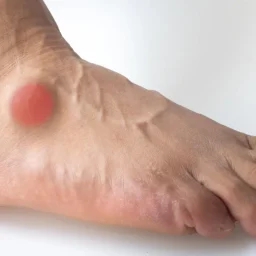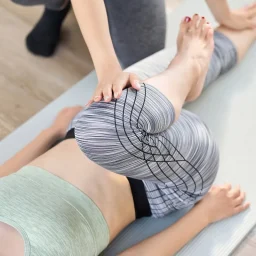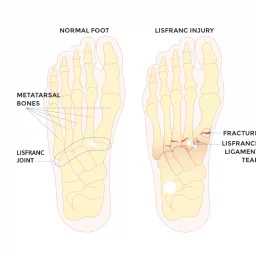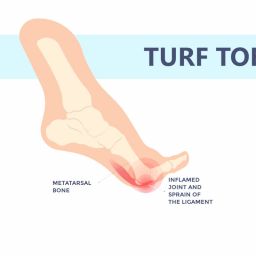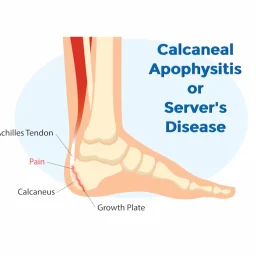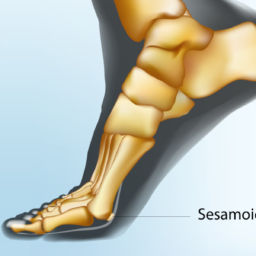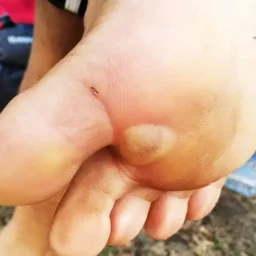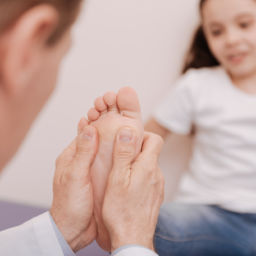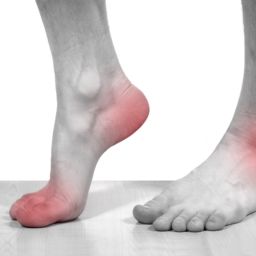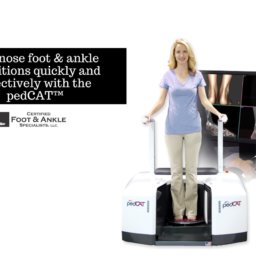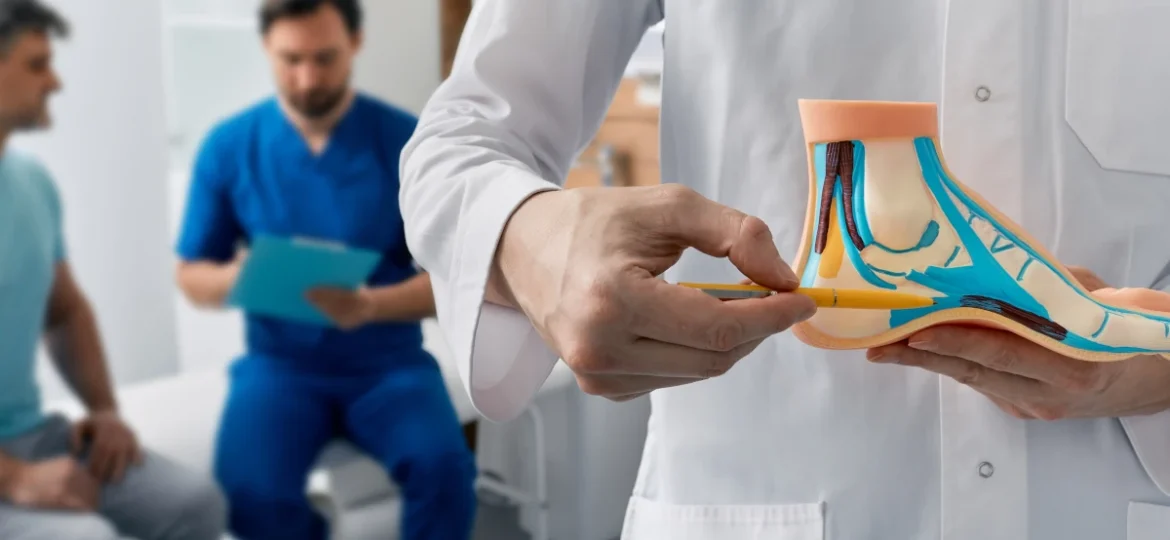
High arch feet, medically known as cavus foot, is a condition that affects a significant portion of the population and can lead to a variety of discomforts and long-term complications. Unlike flat feet, where the arch is lower than normal, individuals with high-arched feet have an abnormally elevated arch. This structural anomaly can cause a series of biomechanical problems that influence a person’s mobility, comfort, and overall quality of life.
What Defines High Arch Feet?
A high arch, or cavus foot, refers to an arch that is excessively elevated, often causing the foot to appear overly rigid. The foot’s natural shock absorption ability is compromised due to the reduced contact with the ground, which can lead to increased pressure on the forefoot and heel. This biomechanical imbalance can cause various difficulties during daily activities, including standing, walking, or exercising.
Unlike flat feet, which tend to cause the foot to roll inward, high-arched feet are more likely to result in excessive supination or outward rolling of the foot. This can place undue strain on certain areas of the foot and ankle, leading to pain and an increased risk of injury.
Common Symptoms and Complications
High arch feet can present a variety of symptoms, some of which can be debilitating. Individuals with this condition may experience:
- Persistent Foot Pain: One of the hallmark symptoms of high-arched feet is constant discomfort, particularly in the ball of the foot or heel. Pain can worsen with prolonged standing or walking.
- Increased Risk of Ankle Sprains: Because high arches affect the foot’s stability, individuals with this condition may experience ankle instability, leading to a higher likelihood of spraining their ankle during physical activities.
- Development of Bent Toes or Claw Toes: The abnormal arch can lead to abnormal pressure distribution across the foot, which may cause the toes to bend, leading to conditions like hammertoes or claw toes.
- Calluses on the Ball of the Foot: Since the arch doesn’t properly absorb shock, pressure is placed on the ball of the foot, which can lead to the formation of painful calluses.
- Difficulty Finding Comfortable Footwear: People with high arches may find it challenging to find shoes that provide the necessary support and fit. Shoes that are too rigid or do not accommodate the foot’s shape may exacerbate pain.
- Instability During Physical Activities: The lack of proper arch support can affect balance, making activities like running, walking, or participating in sports more challenging.
Underlying Causes of High-Arched Feet
High-arched feet can result from several underlying factors, which may be present at birth or develop later in life:
- Neurologic Conditions: Some neurological disorders, such as Charcot-Marie-Tooth disease, can affect muscle control and lead to abnormal foot arches.
- Inherited Genetic Predispositions: Family history plays a significant role in the development of high-arched feet. If a person’s parents or siblings have high arches, they are more likely to develop the condition as well.
- Muscular Disorders: Conditions that affect the muscles, such as polio or cerebral palsy, can result in high arches as a result of muscle imbalances or weakness.
- Neurological Conditions Affecting Muscle Balance: Conditions that disrupt the balance of muscle strength and coordination can lead to the formation of high arches. This can include issues such as muscle atrophy or nerve damage.
- Previous Injuries or Trauma: Trauma to the foot or ankle, such as fractures or ligament tears, can result in altered foot mechanics, potentially leading to the development of high arches.
Potential Health Implications
If left untreated, high arch feet can lead to a range of long-term health complications, including:
- Chronic Foot Pain: Persistent discomfort in the foot can become a daily challenge, reducing one’s ability to perform daily tasks or enjoy physical activities.
- Increased Likelihood of Ankle Sprains: The lack of proper arch support and instability in the foot can increase the risk of ankle sprains and other injuries during sports or normal physical activity.
- Biomechanical Stress on the Foot and Ankle: The abnormal foot structure places extra stress on the tendons and ligaments, which can lead to conditions like Achilles tendonitis, plantar fasciitis, or stress fractures.
- Potential Development of Additional Foot Deformities: High arches may contribute to the development of other foot deformities, such as bunions, hammertoes, or other structural changes over time.
- Challenges with Balance and Mobility: People with high arches may experience difficulty with balance and coordination, making walking and standing for long periods tiring or even dangerous.
Diagnosis and Assessment
To properly diagnose high-arched feet, podiatrists conduct a thorough evaluation that includes:
- Comprehensive Physical Examination: A podiatrist will examine the structure of the foot, looking for signs of excessive arch height and abnormal positioning.
- Gait Analysis: Analyzing the way a patient walks can provide insight into how the feet and legs are functioning together. This helps identify abnormal movements or compensatory patterns caused by high arches.
- Foot Structure Assessment: Using tools like a pressure mapping system, podiatrists can evaluate how pressure is distributed across the foot to better understand the impact of high arches.
- Potential Neurological Screening: If a neurological condition is suspected, further testing may be required to determine if nerve damage or muscle dysfunction is contributing to the condition.
- Review of Medical History: A detailed history of any past foot injuries, family history of foot conditions, or neurological issues can help in making an accurate diagnosis.
Treatment Strategies for High Arch Feet
While high-arched feet may not be able to be “cured,” various treatment strategies can help alleviate symptoms and improve foot health. These include both conservative and advanced management options.
Conservative Management
- Custom Orthotic Devices: Custom-made orthotics are essential for individuals with high arches. These devices are designed to provide proper arch support and redistribute pressure more evenly across the foot, which helps reduce pain and prevent further complications.
- Physical Therapy: Targeted exercises and stretches can improve foot flexibility, strength, and function. Physical therapy can also help reduce pain and prevent further complications by addressing muscle imbalances and improving overall foot mechanics.
- Appropriate Footwear: Footwear is crucial in managing high arches. Shoes with adequate arch support, cushioning, and flexibility can help provide comfort and reduce stress on the feet. Specialized insoles or shoes may be recommended to improve support and alleviate pain.
- Padding and Cushioning: To reduce calluses and discomfort, soft insoles or padding may be used to cushion the ball of the foot and other pressure points.
Advanced Interventions
In more severe cases, podiatrists may recommend more advanced treatments, including:
- Specialized Bracing: Custom braces can be used to provide additional support and stability to the foot, particularly during physical activities.
- Surgical Foot Correction: In some cases, surgery may be necessary to correct severe deformities or imbalances caused by high-arched feet. Surgical options might include tendon lengthening or osteotomy to realign the foot structure.
- Advanced Orthotic Devices: In certain situations, specialized orthotic devices such as custom-built shoes or insoles may be needed to provide more precise support.
- Comprehensive Treatment Plans: A personalized treatment plan, developed in collaboration with a podiatrist, may involve a combination of therapies, custom orthotics, and lifestyle changes to manage symptoms effectively.
Prevention and Management Tips
While high arches are often genetic or the result of underlying conditions, there are steps you can take to manage the condition and prevent further complications:
- Regular Foot Assessments: Regular visits to a podiatrist can help monitor the condition and catch any changes early.
- Wearing Properly Fitted Shoes: Always wear shoes that provide adequate arch support and cushioning, and avoid high heels or shoes that may aggravate your foot structure.
- Using Custom Orthotic Devices: Wearing custom orthotics can provide much-needed support and alleviate pain associated with high arches.
- Maintaining a Healthy Weight: Reducing excess weight can relieve stress on the feet and help reduce symptoms of high arches.
- Performing Recommended Foot Exercises: Stretching and strengthening exercises for the foot and ankle can improve flexibility and prevent pain.
- Addressing Underlying Neurological Conditions: If there’s an underlying neurological condition contributing to your high arches, it’s important to work with your healthcare provider to manage it effectively.
When to Seek Professional Help
If you experience any of the following symptoms, it’s time to consult a podiatrist:
- Persistent Foot Pain: If pain in the foot or ankle is ongoing and doesn’t improve with rest or basic care, it’s important to seek professional help.
- Frequent Ankle Sprains: Regular ankle injuries or instability during physical activity may be a sign that high arches are affecting your balance.
- Noticeable Changes in Foot Structure: If your foot structure appears to be changing, or if you notice the development of deformities like claw toes or calluses, it’s important to seek medical advice.
- Difficulty Walking or Standing: If you have trouble standing for extended periods or walking due to discomfort, a podiatrist can help determine the cause and recommend appropriate treatments.
- Development of Calluses on the Ball of the Foot: Persistent calluses on the ball of the foot may indicate improper pressure distribution and should be assessed by a healthcare professional.
Conclusion
By seeking professional foot help from a podiatric clinic and adhering to a customized treatment plan, individuals can improve their comfort, mobility, and overall quality of life. Remember, every foot is unique, and what works for one person may not be suitable for another. A comprehensive, patient-centered approach is essential to effectively managing high-arched feet. Give us a call today to make your appointment with our foot and ankle specialists. We have a foot and ankle clinic in Palm Harbor and Tampa staffed with compassionate and experienced staff.

